SMBC-GAI: The Inside Story on the SMBC Group’s Own AI Assistant
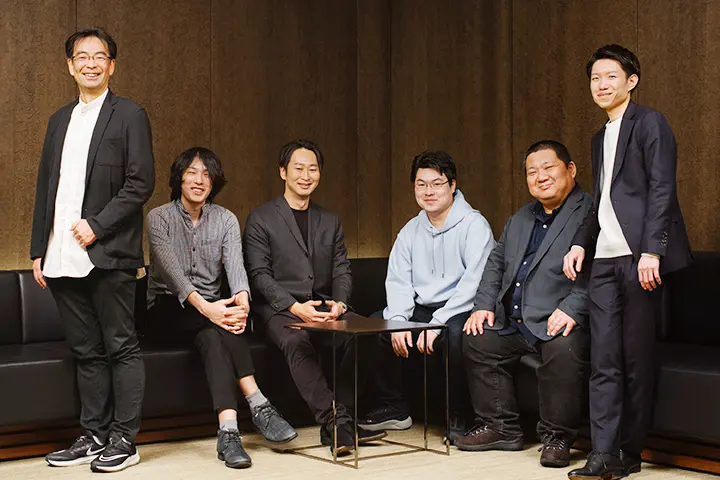
Generative artificial intelligence (GAI) tools like ChatGPT might be a hot topic at the moment, but companies have had mixed responses to the idea of utilizing this new technology in their business operations, and should they do so, what rules might be needed to accompany it. In July 2023, the SMBC Group became the first among major Japanese banking groups in developing and rolling out its own AI assistant tool. SMBC-GAI is accessible only to SMBC employees and runs only within SMBC’s private network.
How was the development team able to release SMBC-GAI in just four months while addressing safety and security concerns, and how did they put together guidelines? We asked the team for the inside story on how they overcame the many obstacles in their path.
An AI assistant embedded into Microsoft Teams
Following the release of ChatGPT, a lot of companies chose to wait and watch before using this technology in their own operations. What prompted the SMBC Group to embrace ChatGPT so quickly?
One of the Five Values shared by all SMBC Group officers and staff is “Proactive & Innovative.” Even before ChatGPT was released, we were proactively adopting AI and other cutting-edge technologies, which are now used in many of our business operations.
Not just generative AI but new technologies in general can produce amazing results when used well. Used poorly, however, they become a major risk, so risk control is critical. When we developed and launched SMBC-GAI we also created guidelines, and we started by building a prototype for a leakproof chatbot tool running only in the SMBC Group environment and accessible only to Group employees.
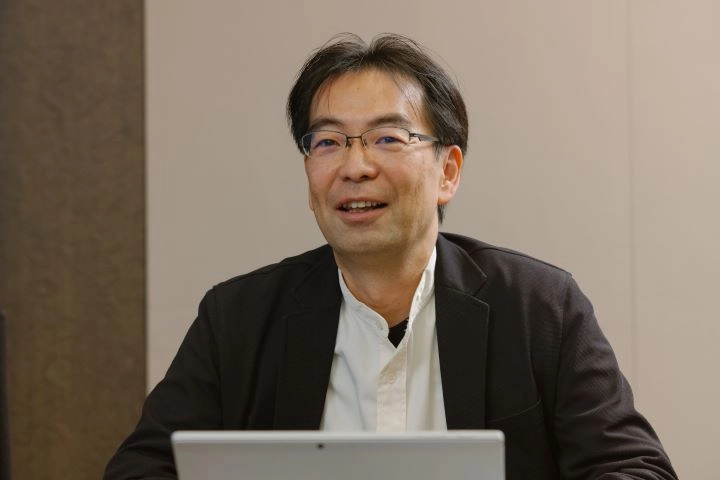
Were there any points that you paid special attention to in creating the SMBC-GAI prototype?
Microsoft started offering ChatGPT access on its Azure OpenAI Service in March 2023. We were keen to seize the opportunity to use ChatGPT in our own business, so we immediately launched into development. First, we announced on the SMBC internal social media network Midori no Hiroba (generally known as Midoriba) that we were planning to make a tool enabling ChatGPT-like functions to be used internally. That post racked up a huge number of likes, as well as a lot of enthusiastic comments suggesting possible functions. The post also explicitly stated that we would create a tool that could be used safely and securely so as to minimize risk, and I think that went a long way to defusing resistance to the idea.
One particular point was enabling the assistant to be used in Microsoft Teams. If we had embedded it in a web page, the user would need to open that page every time, but with the assistant built into a communication tool like Teams, ChatGPT can search for information, translate documents, and transcribe audio data just like a staff member.

Fast system development but painstaking rule development
What was your focus in making rules for actually using SMBC-GAI?
Generative AI sometimes comes up with factually inaccurate answers, so it’s important to be aware of that risk. Previously, rules have been developed from the perspective of the engineers using AI to build systems, but now our focus is on the need for a risk mindset among users as well. In other words, we are placing greatest priority on users making careful judgments about the accuracy and legitimacy of generative AI responses.
SMBC-GAI specs require the assistant to show the user the addresses of the sites from which it sourced its information. By clicking the links, the user can go to those sites and check the accuracy of the assistant’s answer. In addition to clearly stating in the rules that users have to check AI answers, we also emphasize this point in internal notifications, training videos, and the manual.
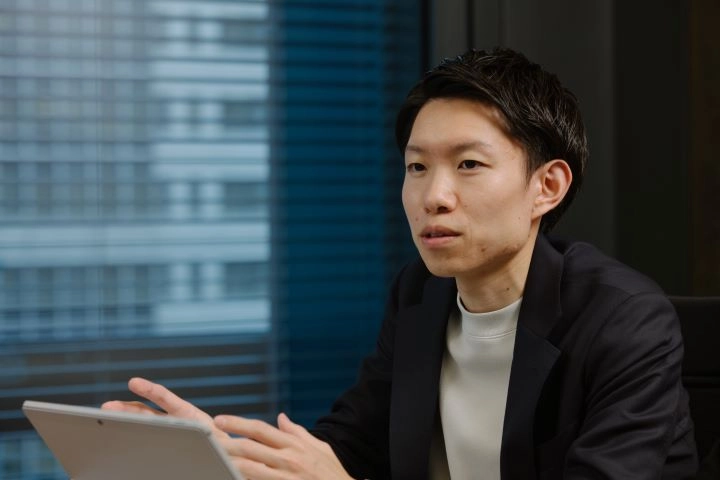
It took only four months to develop SMBC-GAI and design the accompanying rules. How were you able to move so fast?
Since we introduced Microsoft’s integrated information-sharing cloud service Office 365 (now Microsoft 365) in 2017, we’ve been designing measures to ensure safe and secure service use. And of course, 2022 saw the conclusion of a strategic partnership with Microsoft. I think that technological accumulation played a huge role in the speed of the SMBC-GAI release.
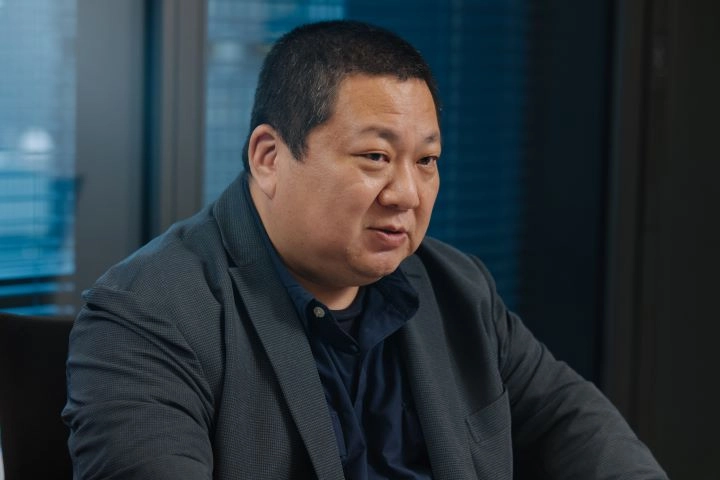
The actual development was in fact completed in a matter of days, and then we spent the remaining three and a half months on creating rules. At the time, there were a lot of unknowns around AI—as there still are now—and who knows what the right choice will be? Our plan was to develop SMBC-GAI for partial release in-house and then use the feedback to improve it. Repeating that cycle would bring us closer to the answer. So, our priority was on getting as many people as possible using the assistant. In other words, we believed that if people just gave the assistant a try and got great answers back, user numbers would grow organically, so we hustled through the initial development process.
I think it’s important to align rules and systems. When the rules are revised, the system should be updated accordingly. When a new technology emerges, the rules too should be changed. With SMBC-GAI, we’ve used this agile governance* approach to keep a good balance between rules and systems.
* A governance model whereby goals and systems are updated in response to changes in the surrounding environment.
SMBC-GAI grows into a tool used once every two seconds
How is SMBC-GAI being utilized in the SMBC Group?
It’s being used for a whole range of tasks, from looking up technical terms, drafting emails, and summarizing and translating documents to generating source code for programming languages, helping to boost productivity. At the same time, because generative AI basically learns from past data, it can give data-based answers, but it can’t come up with original ideas that depart from that data. I think we’ll still be relying on the human mind for creative new ideas.
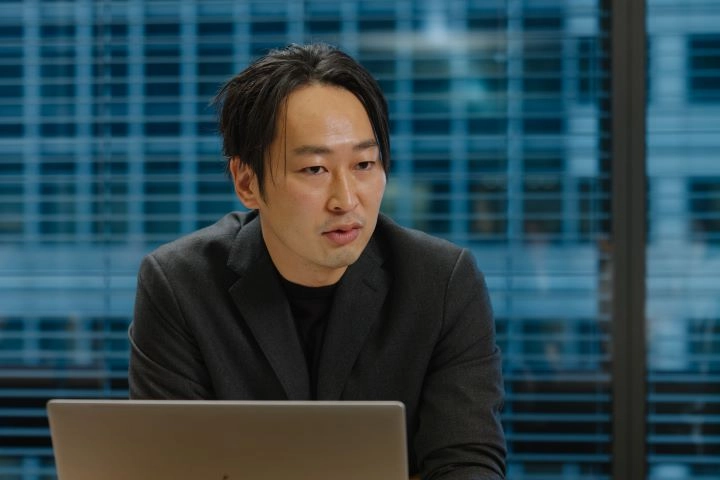
Post-release, have users raised any issues?
Prompts! Ask a bad question or give bad instructions, and you get a bad answer. Questions have to be framed in a way that AI can understand, and users didn’t quite get that at first.
For example, when you ask AI what you should have for dinner, if you add that you want an answer from a nutritionist’s perspective, the AI will make healthy food recommendations. Even in the case of something as simple as a dinner menu, the answer will be very different according to whether you want something tasty, something easy to prepare, or something healthy. Users need to be aware of that when they frame their question. Now, we’re facilitating the dialogue by accompanying SMBC-GAI answers with a few prompt options that are more specific.
There are tips on how to write a good prompt in the manual and other training materials, and people gradually seem to be getting the hang of it.
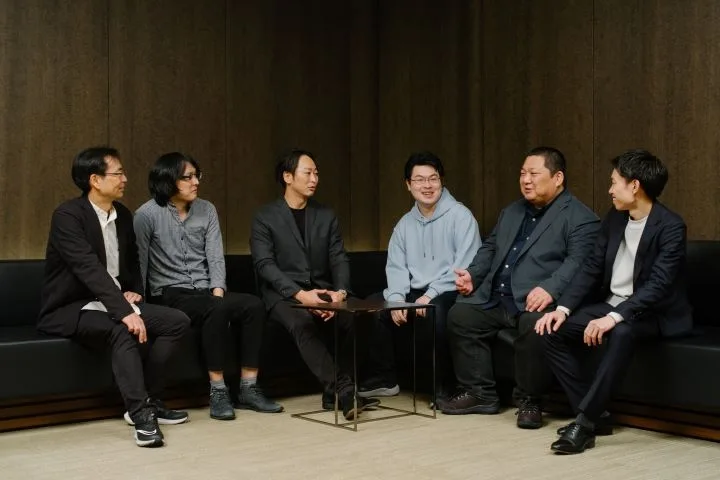
How many times a day is SMBC-GAI used?
In July when SMBC-GAI was first released, the utilization rate was about 6,000 times a day. As more people have started to use it, that rate has gradually increased to around 12,000, or around once every two seconds.
Using the AI assistant for call center support
What are your plans in terms of fully integrating SMBC-GAI into business operations?
The SMBC Group plans to continue making active use of SMBC-GAI. We’ve already built it into Teams and spread it throughout the Group in the form of a chatbot, so now we’re engaged in proof-of-concept work toward, for example, enabling it to search company regulations. Once we’ve eliminated the risks associated with AI, we also want to use it to boost the quality of our customer services. Specifically, we’re looking into using SMBC-GAI in our call centers.
Because we’re still not at the point where AI can take over all call center work, the plan is to divide the work between human staff and AI, with the first step being for AI to provide support for human staff. For example, call center operators really struggle to keep records of the content of conversations with customers, so we aim to boost business efficiency by having AI handle this task.
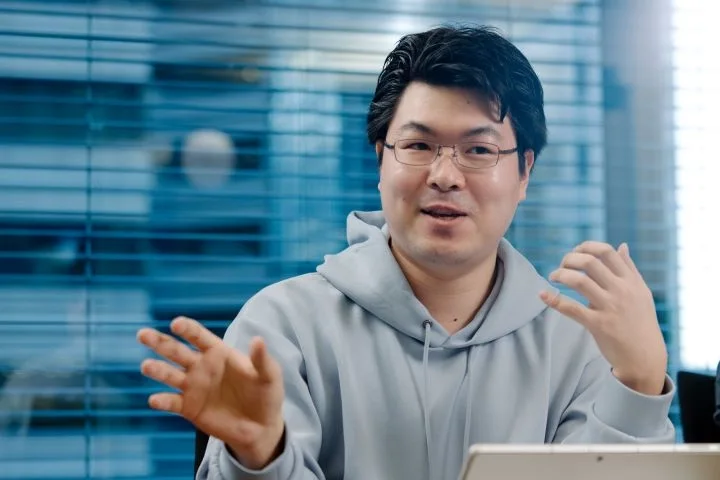
-

Joint General Manager, IT Planning Department, Sumitomo Mitsui Banking Corporation
Yukihiro Uemura
Joined SMBC in 1999. After working in retail banking services at an SMBC branch, he moved to the Information Systems Unit. Transferring to the Japan Research Institute (JRI) in 2005, he continued to engage in IT infrastructure-related project planning and promotion, including mainframes, networks, and a virtual server platform for the whole SMBC Group. He took up his current position in October 2022.
-

Head of Infrastructure Planning Group, IT Planning Department, Sumitomo Mitsui Banking Corporation
Yotaro Yamamoto
Joined SMBC in 2007. Worked in corporate sales for middle-ranked companies and small and medium enterprises before joining the IT Planning Department, where he engaged in IT strategy development and budget management and drove system development projects at SMBC and Group companies. After secondments to JRI and the Information Systems Department at Sumitomo Mitsui Card, he took up his current position in April 2023.
-

Senior Vice President, IT Planning Department, Sumitomo Mitsui Banking Corporation
Ken Jizaimaru
Joined SMBC in 1993. Handled financing, loans, and other retail banking services at an SMBC branch before moving to the Information Systems Unit. After transferring to JRI in 2005, he planned and promoted OA-related projects, including the SMBC intranet platform and email system. He took up his current position in November 2013, continuing to deal with OA-related projects as well as planning and promoting those in new areas such as cloud services utilization and AI.
-

Vice President, IT Planning Department, Sumitomo Mitsui Banking Corporation
Kazuki Hyodo
Took on various development projects on a freelance basis as of 2011. Joined JAIS in 2014. Worked on development projects at JRI from 2015 before joining the IT Planning Department at SMBC in 2019, where he has been involved in developing various new technologies. As deputy manager of the IT Planning Department, he handles planning and implementation for the utilization of new technologies, IT infrastructure optimization, and security enhancement.
-

IT Planning Department, Sumitomo Mitsui Banking Corporation
Riku Nakauchi
Joined SMBC in 2018, handling banking services for two years in the Corporate Banking Department before transferring to the IT Planning Department to plan and promote internal OA-related projects. As of July 2023, he has been in charge of utilizing generative AI in internal business systems.
-

IT Planning Department, Sumitomo Mitsui Banking Corporation
Satoshi Sahashi
Joined SMBC in 2019, initially working on corporate sales for small and medium enterprises. From 2022, he pursued internal IT infrastructure optimization in the IT Planning Department, strengthening information infrastructure. In July 2023, he introduced the cutting-edge technology of generative AI to SMBC’s internal systems with the aim of boosting business efficiency and employee productivity. He is currently engaged in generative AI-related planning and promotion.
